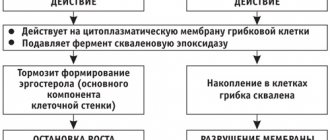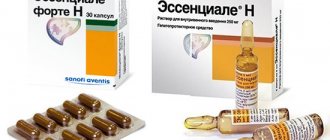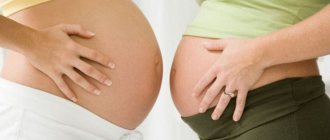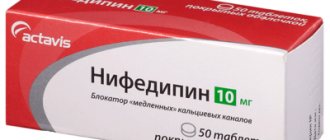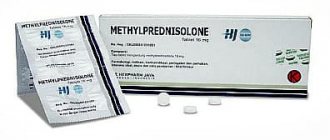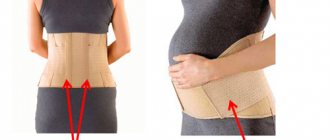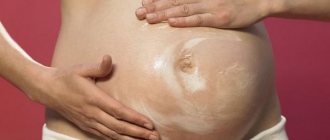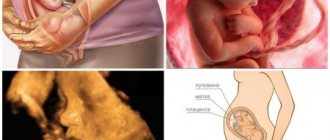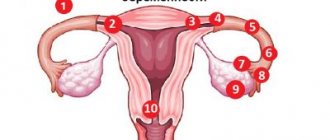Are piercings and pregnancy compatible?
Will the piercing hole change during pregnancy and after childbirth? Can there be consequences from a navel earring during pregnancy? Is it possible to pierce new holes?
Let's try to answer all these questions.
Body modification, recently, is back in fashion, many women pierce their navel, nipples, genitals, not to mention earlobes, tongue, lip, eyebrow and other interesting places. The biggest concern during pregnancy is the earring in the navel. This is not surprising; as the tummy grows, this area changes significantly, the navel smooths out and stretches, and in some women it even becomes inverted and convex.
A legitimate concern is the possible change in the piercing in the navel area. There are more than enough cases when a hole from a piercing after pregnancy has stretched and become unnatural, women share their experiences and are upset in advance. However, it is not a fact that your case is the same; it is quite possible that everything will work out. A lot depends on how old the hole is. If the piercing was done several years ago, it most likely will not change in any way.
In this case, you will still have to remove the earring. At least for an ultrasound, and it would be best if you removed it for childbirth.
For the entire period, the decoration must be changed to a special flexible hypoallergenic one made of Teflon. It won't cling to clothes on your growing belly and won't get in your way. Usually this need arises after 20 weeks. If you don’t buy such an earring, you can temporarily pass a silk thread through the hole so that the hole does not become overgrown. Although it should be noted that the likelihood of overgrowth is not high, and only happens with a recent puncture. If it so happens that the piercing is overgrown, you can later pierce the navel again along the old holes.
A fresh navel piercing shortly before conception can cause concern. This hole can cause a lot of trouble.
Overgrowth is possible within 3 - 8 weeks; if you remove the earring, the hole in the growing belly may stretch and a cosmetic defect may form. That's why you shouldn't get your belly button pierced when planning to conceive or while you're pregnant.
If the puncture was made recently, in your situation you need to carefully care for it, since the immune system is weakened and inflammation can easily develop. Care as usual, washing the area frequently with soap and water.
Nipple piercing is traumatic; if not performed carefully, it can lead to injury to the milk ducts, and is not recommended by obstetricians. For 9 months, not only should you not pierce your nipples, but you also need to remove any earrings. It should be noted that an existing puncture can cause lactostasis after childbirth, since the scar can block the outlet openings of the ducts
, women after nipple piercing are at risk of postpartum mastitis.
Nipple piercings are not allowed when breastfeeding. The earring can fly off during feeding and kill your baby, causing asphyxia, not to mention the fact that a foreign body in his mouth is unlikely to give you both pleasure, and the earring increases the risk of injuries and purulent-inflammatory diseases of the nipples. When removed, the holes will most likely close up, but no one is stopping you from piercing your nipples again after you finish breastfeeding.
Piercing of the genital organs, for example, the labia, does not interfere with pregnancy during pregnancy, but it is necessary to get rid of earrings during childbirth, because the earring will cause an inevitable rupture of the labia during childbirth.
And most importantly, in your interesting position - no new experiments with your body. Do not risk yourself and your child; the risk of complications is very high due to reduced immunity.
Frozen pregnancy, diagnosis Pregnancy after a frozen pregnancy
Piercing and pregnancy
The answer to the question about piercings during pregnancy is yes and no. Depending on the situation: • In the case when a woman had a piercing a long time ago, is already accustomed to wearing jewelry and the piercings do not fester, the answer is Yes.
• If you are just planning to get a piercing while you are already pregnant, the answer is definitely No.
When you are so accustomed to wearing jewelry like this that you don’t plan to take it off even while you are in the maternity hospital and breastfeeding, you should replace it with polytetrafluoroethylene (PTFE) or Teflon.
Piercings made from such metals are much lighter than gold ones and will not harm either the expectant mother or her baby.
Cordocentesis: timing of the study of the obtained blood
The blood sample obtained from the procedure will be analyzed in a laboratory. Test results are usually available within a few days, but the timing depends on the nature of the tests and the indication for cordocentesis.
Your healthcare provider or genetic counselor will help you understand your cordocentesis test results. If your test results are normal, your healthcare provider will discuss the need for follow-up visits and how to manage your pregnancy.
If your child develops an infection, your doctor will explain treatment options. If your baby has severe anemia, he or she may need a blood transfusion through the umbilical cord. Any analysis requires the interpretation of a competent specialist whom you trust, and who can clearly explain the results and further necessary steps to you.
If the results of a cordocentesis indicate that your baby has a condition or disease that is not treatable or incompatible with life, you may be faced with agonizing decisions, such as whether to continue the pregnancy. During this difficult time, seek help from your healthcare team, your loved ones and other close contacts. Such decisions are not made at once; this is a very difficult choice for any parents. It is imperative that the spouse or the pregnant woman herself needs consultation from a specialist, a psychologist who specializes in such problems.
New piercing during pregnancy
It's no secret that in the process of bearing a child, the body of the expectant mother changes globally both physiologically and at the biological level. Any cold, even the mildest one, can negatively affect the body of a pregnant woman and her unborn child. Moreover, it is extremely dangerous for various infections and bacteria to enter a woman’s blood, which can also cause irreversible consequences.
Think about whether you should risk the health of two people so much, or whether you can wait a little and get the piercing after giving birth.
This procedure can damage important active endings and blood vessels, which are found in abundance in “favorite” places for piercing. In the process of careless puncture, some kind of infection can occur and this will definitely result in a serious process of inflammation, which is highly undesirable during pregnancy. It is necessary to minimize the risk of unhealed punctures during pregnancy.
Even if you follow all measures to improve healing, and also monitor its sterility, the process of inflammation still takes place and, accordingly, can negatively affect pregnancy, even premature birth. It is in this regard that, as soon as you find out about your situation, it is necessary to remove all pendants and help the punctures heal as quickly as possible.
How to puncture the amniotic sac
How and with what is the bladder pierced during childbirth, how dangerous is it? After manipulating the cervix (the gynecologist stretches it with his fingers), a metal gynecological instrument with a slightly bent end is inserted into the vagina. This end engages the fetal bladder and with a sharp movement pulls it towards itself. At this moment, the amniotic sac bursts, water flows out, and the uterus begins to contract.
After puncture of the bladder before birth, the baby’s heartbeat is monitored (the mother in labor is connected to CHT or periodically monitored) throughout all stages of labor. The puncture is performed only by a doctor, not an obstetrician, who will continue to conduct the birth. This procedure does not pose a danger to the child and mother. On the contrary, stimulation of labor speeds up the intensity of contractions, and the baby is born faster.
Piercing during pregnancy with old piercings
In the case when you had the piercing done a long time ago, and all the punctures have healed safely, this does not pose a threat to your unborn baby. However, wearing jewelry should not make you feel uncomfortable.
Particular attention should be paid to the piercing in the navel. As soon as wearing jewelry becomes uncomfortable, and the stomach begins to actively grow, they must be removed immediately.
To ensure that the puncture site does not “disappear”, and at the same time you do not worry about safety, you need to wear Teflon pendants.
What materials are best to choose jewelry from during pregnancy?
In the process of bearing a baby, it is better to give up gold, silver, and especially metal jewelry. Doctors advise choosing PTFE (Teflon), since, due to its qualities, it cannot be a place for the proliferation of bacteria and infections. This material is actively used for medical purposes, since it is more compatible with the human body than any other.
Transplants are made from Teflon and are actively used in bioengineering. Its advantages also lie in the fact that it is not rejected by the human body, does not cause irritation, is plastic, but at the same time is the most durable of existing materials.
Teflon jewelry can be left on even during cosmetic and even medical procedures. Nowadays, PTFE jewelry is being actively created and is in demand. They can be completely transparent and almost invisible to the human eye, but at the same time, your puncture will not heal. Also, the transparent base can be used as a cut for a beautiful or even precious stone - such jewelry is in great demand not only among expectant mothers.
Also, special components can be added to PTFE that will glow in the dark. So you can choose excellent substitutes for precious metals that will look no worse, but at the same time, will not harm your health, as well as the health of your child.
There are also other materials for piercing:
• Wooden decorations; • Made of ivory; • Plastic pendants; • Gold; • Platinum; • Silver; • Made from surgical steel. You need to understand that during pregnancy you should be doubly careful when choosing the material from which the jewelry is made. It is necessary to exclude those to which you have an allergic reaction, as well as those that are not a favorable environment for the proliferation of various bacteria and microorganisms.
Keep in mind that while carrying a child, an allergy can appear even to materials and metals that have never occurred before. Therefore, if you suddenly begin to feel discomfort in the puncture area, it is necessary to urgently remove all jewelry in order to avoid unwanted consequences, including inflammatory processes.
Surgical steel is also one of the popular materials for prising, however, it is inelastic.
In this regard, while carrying a child, you should not wear such jewelry, since if the “volume” of the body changes, they can cause serious injury or rupture. In connection with the above, we recommend that you still opt for PTFE jewelry, as it is the safest
Navel piercing during pregnancy
As we discussed earlier, if a woman had a piercing several years before her “position,” then it is absolutely safe for both her and the unborn baby.
But a completely different turn takes place when the puncture is performed during pregnancy, since the healing process is complicated. Also, as the abdomen grows, the size of the puncture will expand due to stretching of the skin. In addition, due to a weakened immune system, the risk of inflammation and suppuration of the puncture increases, which is fraught with complications during pregnancy. As soon as you notice the onset of inflammation in the navel area, consult a doctor immediately.
We also note once again that the material from which the piercing is made is also of great importance during the period of bearing a child. Metal jewelry, in addition to possible allergic reactions, can cause discomfort.
In this regard, doctors insist that they need to be replaced with polytetrafluoroethylene (PTFE), which are accepted by any, even the most capricious organism and can be left in place until childbirth. But, no matter how safe the jewelry is, in the maternity hospital they will be forced to remove it, especially if you have indications for delivery through a caesarean section. As a rule, in the first trimester of pregnancy, piercing does not cause discomfort. But in the following months, due to the growth of the abdomen, the size of the puncture also becomes larger, which can cause inflammation.
Also, the inflammatory process can begin due to the fact that the more the belly grows, the more “convex” the navel becomes and the jewelry begins to touch the clothing, thereby injuring the puncture site. Therefore, when the stomach has already reached its “peak”, it is better to remove the jewelry. As practice shows, a pregnant woman removes her piercing after the sixth month of pregnancy, as it causes her discomfort. Subsequently, she wears more elastic jewelry or a thick silk thread, which is less attractive, but will definitely prevent the puncture from healing.
Even if you have removed the navel piercing, you must also monitor the puncture and treat it with special disfiguring agents. And in order for the skin to become elastic, it is necessary to rub special creams into it with massage movements.
It is also necessary to maintain body hygiene and thoroughly wash the puncture site with a soapy sponge, then rinse with water. If you have come to the conclusion that you want to get a navel piercing during pregnancy, then you should wait until after the baby is born.
Nowadays, most piercing salons are “underground”, so few people there follow sanitary and hygienic standards, and this is fraught with diseases such as hepatitis and the Human Immunodeficiency Virus. I think it’s no secret to anyone that during pregnancy a woman’s immunity is greatly weakened and she is susceptible to various diseases like no other. Even if you are convinced that the salon has all the certificates, all safety rules are followed and the professionals work, we recommend that you refuse piercing before giving birth. This will protect both yourself and your unborn baby.
Cordocentesis, when is it done?
If cordocentesis is planned, at what time this analysis is done is also important. It is possible to carry out cordocentesis starting from the 20th week of pregnancy, but it is optimal to conduct the study at 22-25 weeks, as required by law. But if there are indications, it can be carried out either earlier, from about 18 weeks, or at a later date, although this is associated with technical difficulties.
Indications for cordocentesis
Cordocentesis, or percutaneous cord blood sampling, is a procedure that can be used for both diagnostic and therapeutic purposes. The most common indications are isoimmunization and nonimmune edema; Less common is direct administration of drugs to the fetus. In cases of autoimmune thrombocytopenia in newborns, cordocentesis has historically been used to diagnose and evaluate fetal response to maternal therapy. However, tremendous progress has been made in the prophylactic treatment of this disorder in the mother with intravenous immunoglobulin and prednisolone; serial cordocentesis is no longer recommended. Fetal blood sampling may be used to confirm that the fetal platelet count is high enough for safe vaginal delivery in patients wishing to avoid cesarean section. Cordocentesis and intrauterine transfusion are still widely used in cases of suspected fetal anemia. Fetal blood sampling should be performed to confirm the diagnosis before intrauterine transfusion and should be done in an ultrasound department, or, if the fetus is viable, in a setting where emergency caesarean section can be performed if necessary.
Nipple piercing and pregnancy
One of the things that is more controversial than belly button piercings is nipple piercings. The opinions of doctors on this issue are divided - some say that if the nipple piercing was done several years ago and healed well, then there is nothing to worry about. Others advise removing jewelry as soon as they learn about their situation. This is necessary so that the nipples have time to heal and breastfeeding is not compromised.
This question can hardly be answered unequivocally. If you do not initially plan to breastfeed, then monitor your condition. If, due to breast growth, the piercing does not cause you discomfort, then wearing it or not is purely your choice.
If you have decided to breastfeed, it is better to remove jewelry at the very beginning of pregnancy to allow the punctures to heal.
In the event that there is a desire to feed the baby and leave the piercing for this time, there is only one answer - No! This exotic option leads to serious consequences - the child will easily “eat” your piercing, or it will get stuck in his small neck, which will lead to death before the ambulance team arrives. Think about it: is this “dubious” beauty worth the health and life of your long-awaited child?
Biopsy, cordocentesis - consequences
With any invasive prenatal test, be it amniocentesis, placentocentesis, chorionic biopsy, cordocentesis, the consequences may be different, but there is always a list of clear contraindications.
Contraindications to cordocentesis:
- Existing expressed threat of miscarriage
- Presence of isthmic-cervical insufficiency
- Bloody discharge from the genital tract in a pregnant woman
- Infectious process in a pregnant woman - both in the acute phase and exacerbation of chronic
- Uterine fibroids in a pregnant woman, especially large ones and/or localized at the intended puncture site
- Coagulation system disorders
- General serious condition of the pregnant woman
How to prepare for the cordocentesis procedure
If you are 22 weeks or more pregnant, you will be asked to avoid eating or drinking after midnight the night before your cordocentesis. This is because certain complications caused by the procedure may require an emergency caesarean section. You may want to ask your partner or friend to accompany you to your appointment for emotional support or to drive you home afterwards.
On the day of the study, in the presence of the doctor, the patient signs a written informed consent stating that she knows about the procedure, is familiar with the possible risks and complications and agrees to the procedure.
Should I remove my piercing before going to the hospital?
Even if you managed to wear the piercing throughout your pregnancy, you will still have to remove it before the maternity hospital, since in the maternity hospital you will still be forced to do it.
The ban on wearing jewelry in the maternity hospital only applies if you are going to bed by appointment or plan to give birth in a paid clinic.
However, the presence of a piercing, and the desire to leave it for the entire stay in the maternity hospital, must be discussed in advance.
If the piercing does not bring you any unpleasant sensations and the punctures are successfully healed, the jewelry will not interfere with the birth process, even if the operation is scheduled - a caesarean section. Beauty, of course, requires sacrifice, but in no case at the cost of your health and the health of your unborn child. Be healthy!
What is amniocentesis?
It was for diagnostic purposes that amniocentesis was first performed in 1966.
A decade earlier, fetal cells and its gender were determined in the amniotic fluid.
Until this time, puncture of the amniotic sac was used back in the century before last as a method of treating polyhydramnios, as well as for the purpose of killing the fetus at a later stage.
The essence of the “Amniocentesis” method is to take amniotic fluid (amnion) to determine the karyotype of the fetus and confirm the expected diagnoses, namely:
- Down syndrome;
- Patau syndrome;
- Edwards syndrome;
- diseases caused by pathology of the development of the neural tube of the fetus;
- cystic fibrosis;
- sickle cell anemia.

